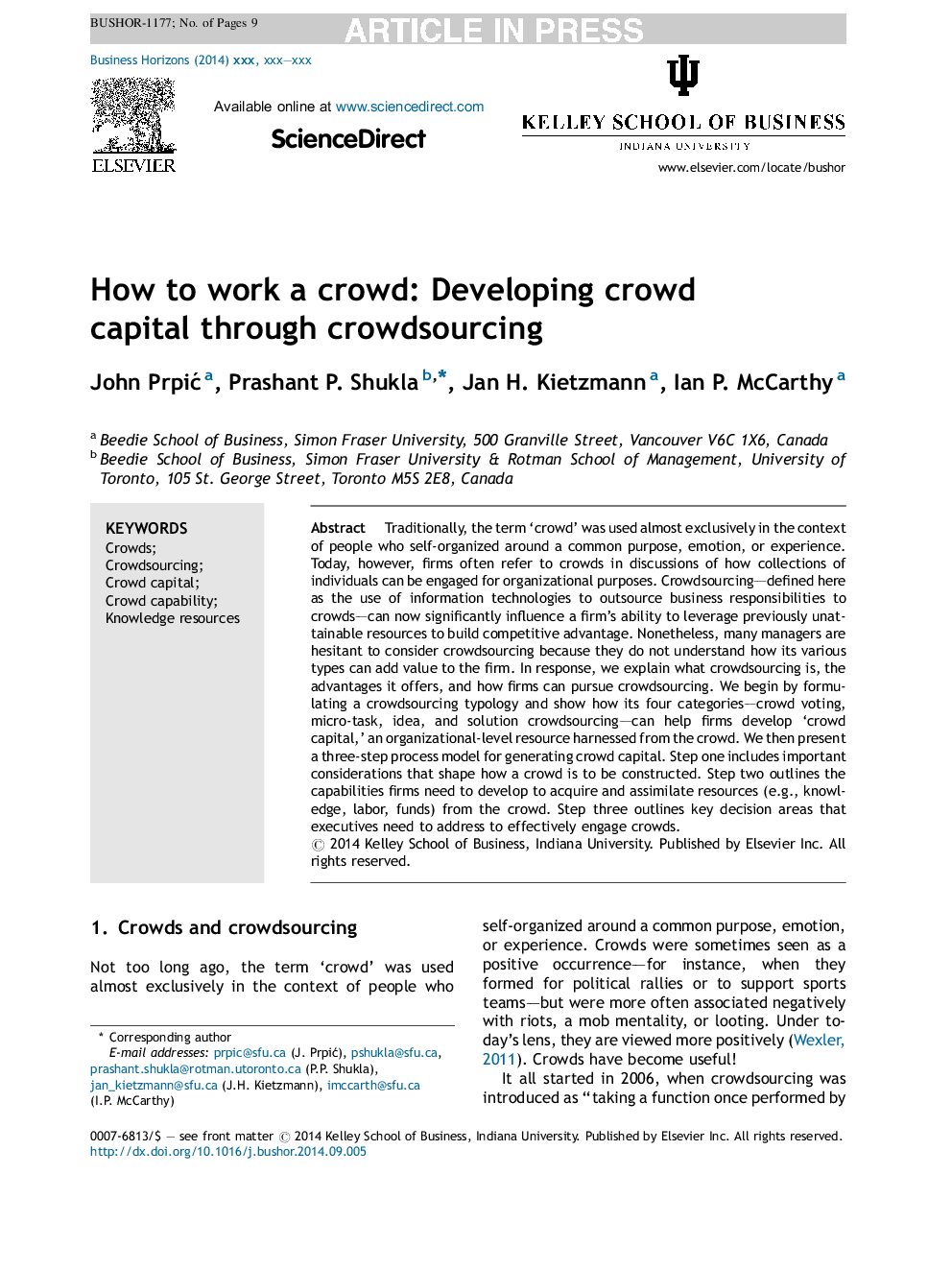| Article ID | Journal | Published Year | Pages | File Type |
|---|---|---|---|---|
| 10491117 | Business Horizons | 2015 | 9 Pages |
Abstract
Traditionally, the term 'crowd' was used almost exclusively in the context of people who self-organized around a common purpose, emotion, or experience. Today, however, firms often refer to crowds in discussions of how collections of individuals can be engaged for organizational purposes. Crowdsourcing-defined here as the use of information technologies to outsource business responsibilities to crowds-can now significantly influence a firm's ability to leverage previously unattainable resources to build competitive advantage. Nonetheless, many managers are hesitant to consider crowdsourcing because they do not understand how its various types can add value to the firm. In response, we explain what crowdsourcing is, the advantages it offers, and how firms can pursue crowdsourcing. We begin by formulating a crowdsourcing typology and show how its four categories-crowd voting, micro-task, idea, and solution crowdsourcing-can help firms develop 'crowd capital,' an organizational-level resource harnessed from the crowd. We then present a three-step process model for generating crowd capital. Step one includes important considerations that shape how a crowd is to be constructed. Step two outlines the capabilities firms need to develop to acquire and assimilate resources (e.g., knowledge, labor, funds) from the crowd. Step three outlines key decision areas that executives need to address to effectively engage crowds.
Related Topics
Social Sciences and Humanities
Business, Management and Accounting
Business and International Management
Authors
John PrpiÄ, Prashant P. Shukla, Jan H. Kietzmann, Ian P. McCarthy,
